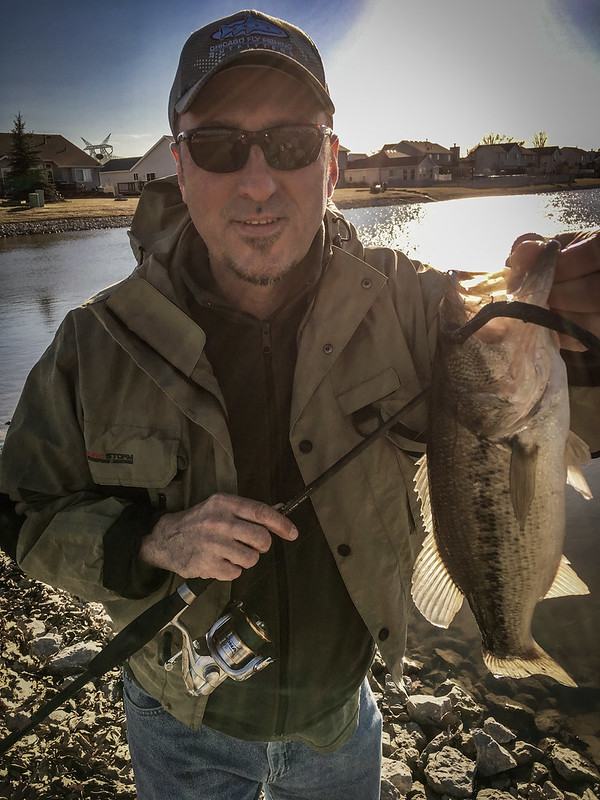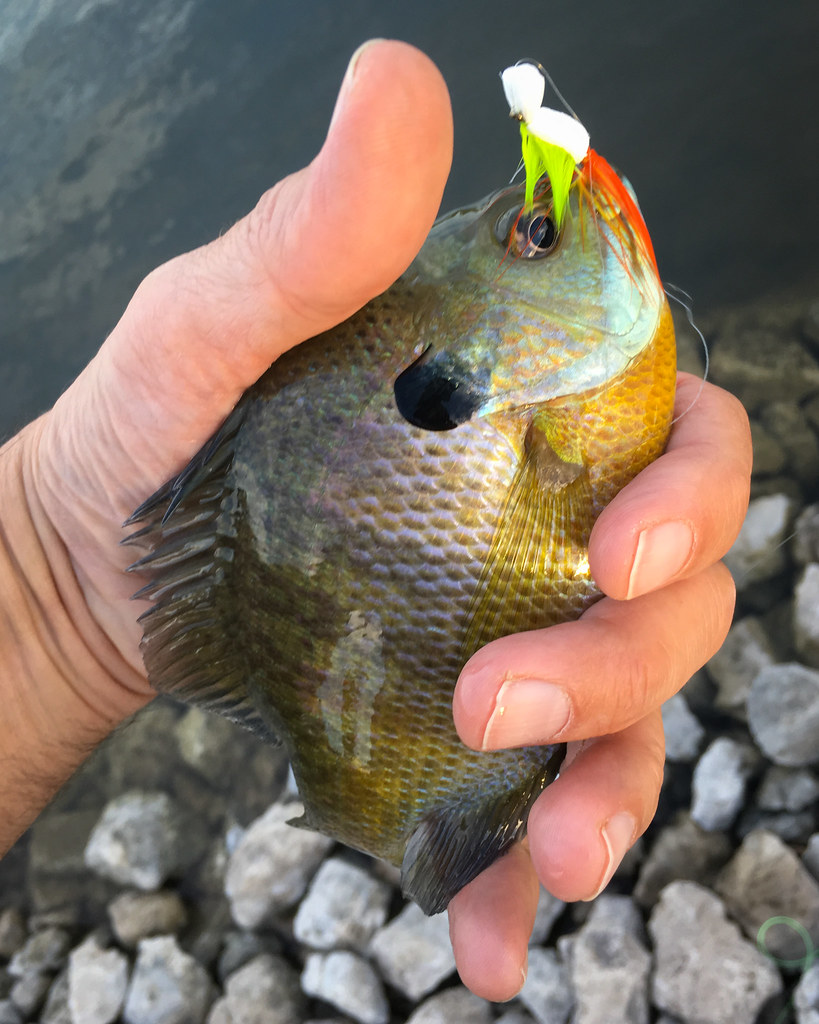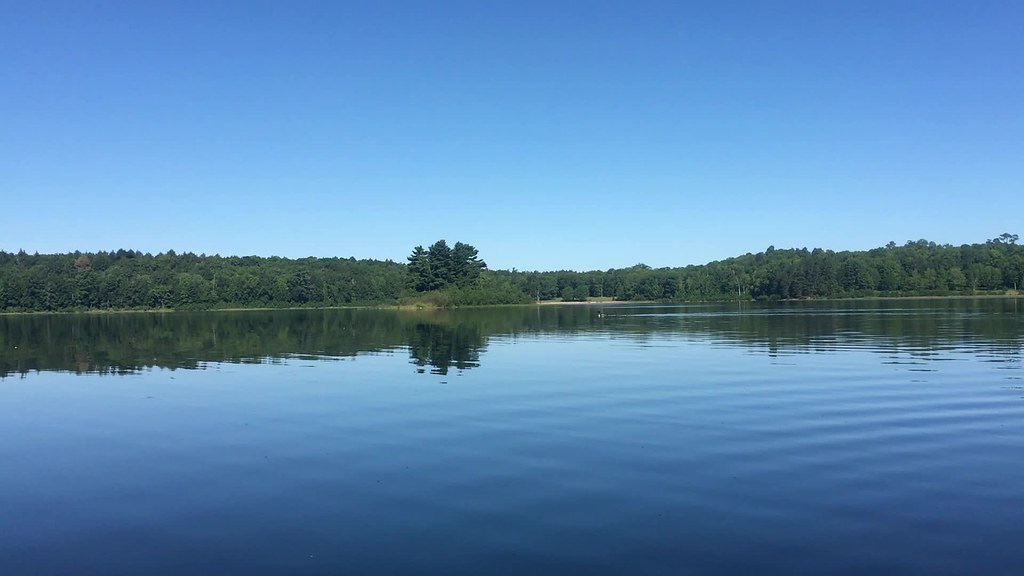-
Posts
2,031 -
Joined
-
Last visited
Content Type
Profiles
Forums
Events
Gallery
Memberships
Blogs
Articles
Media Demo
Posts posted by Mark K
-
-
20 hours ago, Philf said:
This presentation reminds me of the original Charlie Brewer slider worm. They make lots of different jig heads some you can work weedless so you can get pretty fearless and cast them into anything. I use the light wire spider wide gap that has a 2/0 hook for 3 1/2" bass pro tubes.This is my go to lure. The original slider worm and head is very good. The tube casts a little further and mimics a crawfish on the bottom and is pretty snag proof.
2 hours ago, Paul Trybul said:I think slider fishing and ned rigging is a pretty similar approach. I won some ned rigs at the blowout so I plan to use the more. From what I've observed is the slider rig is more snag resistant however the plastic tends to tumble more versus standing up. A proper ned rig with the zman floating plastic really stands up from the bottom.
Yeah. The tail stand up completely because the plastic is buoyant. I have become really skeptical about lures especially soft plastic. Nothing is ever really new, it's just re-molded into a different angler attracting shape. This think has different action than anything I have seen. Check it out.
-
So, I bought some 1/10 ounce jigs and one of the finesse baits- Like a 4" Senko with a shreded tail , I would not attribute catching a bass in cold water to this lure, bur I will say it fishes really nice. and stays out of trouble. Pain in the ass to rig. I would do a few at home.
 First Fish 2018 by Mark Kasick, on Flickr
First Fish 2018 by Mark Kasick, on Flickr
-
Cool, Rob, nice post.
I haven't tie one yet, but i did start using Barr's Meat Whistle (from Cabelas) which Ron recommended. It's a darn good fly. I liked his practical selections for casting. Don't recall that he was a fan of flies that resemble cat toys. Maybe I am wrong about that.
Really, I am still kind of stunned that he is gone. I only met him twice, I think, in person. But I did read most of what he wrote.
-
Man, that is terrible news.
-
-
+1 on Sylvania.
-
-
Take a look here:
Links to recent TU blog.
-
3 hours ago, Rob G said:
You mean like these two? I love bicycle touring in that area and stumbled upon these bad boys a few years ago. As for the trifecta, I did see a Moccasin but he was too quick for me to get a shot.
yep.
-
Always wanted to visit snake road during the migration.
-
2 hours ago, siusaluki said:
The limestone also dissolves calcium in to the water which is something that smallmouth bass love. If you look at the latin name of smallmouth bass, it describes this very well. Micropterous Dolomieu (think dolomite, which is a calcium magnesium carbonate). Smallmouth bass and limestone go hand in hand. In the southern midwest, without limestone in the watershed there may not be any smallmouth.
Well, that makes sense.
why is the LM called salmoids?
-
Jeez, that's awful.
-
Correction that was from "Save the Boundary Waters" organization. But here is an article: Game over. again. How many more years of this?
http://www.startribune.com/feds-ok-mining-on-edge-of-bwca/465989843/
-
From the Sierra Club:
This afternoon, the Trump Administration moved to give a Chilean company an absolute right to mine on the edge of the Boundary Waters against science, law and the will of the people.
-
Just to comment also. I love post processing. I look at going out shooting pictures as gathering pixels. From what I have seen, the processor in the camera rarely capture scenes the way the human sees it, at least not my eye. I felt the same way about shooting film and I essentially lost interest in photography once I lost access to a darkroom.
I heard people call post processing "cheating" I think that is absurd. A camera processes a raw data in body the same way you would on a computer. In fact you can change the way it does it in the shooting menue by using "standard" "vivid" "landscape" portrait" or even "Black and White". Its just some engineers' algorythm applying some extra schmooz to the jpeg. Exactly what you can do in post.
-
2 hours ago, mannym said:
If I recall, my camera can output both JPEG and Raw at the same time. I will have to see if I had it set that way. If so, I will try Lightroom and see if I can spiffy up these photos a bit. I also need to buy a few more lenses. A better wide angle being the first purchase.
Thank you Mark.
Manny the monitor I have at work is dark. They look better on my home monitor and they look good on my phone.
I think the shadows are too deep in the canyon shots for my taste. That's hard to get right in camera. I would spot sharpen certain areas too.
#3 I like the leaves in the foreground. I think that is effective and makes shots interesting. Especially if you use a wide angle where you can move up close and because the depth of field is much deeper, so stuff in the background will still be in focus. Personally I find this part pretty challenging.When I was looking at your shots on my work monitor it almost looked like were done in the evening. So take that low light comment with a grain of salt. So here is a tutorial by a really great wildlife and landscape photographer, I follow his stuff on you tube and it's really improved my stuff. Personally I think he is one of best around and a good teacher. I bough some of his e-books. Steve Perry (not the singer from Journey) of Backcountry Gallery.
Regarding his comments on low light, just make sure you have enough light to pull shadows out of detail without too much noise. One thing that polarizers do really well is cut the glare off vegetation- which there is a lot of. It makes for deep saturated shots and I like that.
Too his comments if you are shooting harsh lighting it's going to be hard not to blow highlights- like skies.
I highly recommend his videos. Though he works mostly in Photoshop, not LR.
https://backcountrygallery.com/waterfall-photography-in-eight-easy-steps/
LR is different than Photoshop. It started out as an organizing program with basic editing features for RAW files. A lot of photographers just did all their editing there and so Adobe refined it over the years to this really powerful editing tool. I used to shoot RAW +jPEG then I stopped with the jpeg because I got so fast at processing in LR it was not worth it. Once you start editing in RAW, and try to go back to jpeg you will see just how much data is missing.
The other great thing about LR is it's totally non destructive to that original RAW file. You can always go back to the original.
A guy on You Tube named Anthony Morganti to me has the best tutorials on LR.
Before you jump on the LR bandwagon, there is another program I got a trial version of called "Luminar", it was like a version of lightroom minus the organizational tools, which to be honest, I don't use as I should. I downloaded a trial version but really never worked with it enough, but what I saw I really liked. and it's non destructive. They havea PC version now if that;'s the way you roll.
-
3 hours ago, mannym said:
I did not shoot raw. But the only editing I did was on the Canal shot using Gimp. I do use ND filters to get the exposure time I needed to shoot these during the day. I almost always use a Polarized lens and or UV filter.
Should I always shoot raw? Also, what editing software do you recommend?
I shoot RAW always and yes, I think you should too. If your Sony has the same 16mp sensor my Nikon D7000 does, you will unlock it's potential of capturing dynamic range.
rarely will your camera capture what the human eye sees in terms of color and dynamic range. Shooting RAW and really working on post processing will improve you photos.
I edit in Lightroom Classic/Photoshop $9.99 a month thing. A bargain in my opinion.
I have never walked away from Mathieson or Starved Rock with a composition I was happy with. You would think it would be a piece of cake. Part of it is I only have an 18mm as my widest lens. On a crop sensor camera that's a 35mm perspective of 27mm and that's not really that wide for shooting canyons. But still it's hard to shoot anything there that doesn't look static and boring.
So, what I learned about this type of photography is that you want the sharp portions of the image to be UBER sharp. That's what makes these type of moving water shots pop, when that sharpness stands out against the soft water. That's hard to achieve in low lighting because the contrast is so low and that is part of what gives you sharpness.. This will sound counter intuitive, but you don't want to shoot these in low light conditions. To make matters worse, if you stop all the way down to your tiniest aperture, diffraction will rear it's ugly head and kill sharpness.
yes, you can spot sharpen, improve saturation, contrast etc in post. But better if you capture as much as possible in the image.
So that would be why ND filters are important. polarizers only chop off 2 stops.
Lastly in long exposures any kind of wind is going to make vegetation look soft. The way around that it to not shoot in wind. Or you can shoot one exposure with a slow shutterspeed one with a fast, stack them in photoshop then using masks erase the portion with the undesired movement to reveal the image with the fast- (therefore sharp) shutterspeed.
I have not tried this yet, but this really looks promising. So you shoot a number of exposures at normal shutter speeds, then stack and blend them in photo shop.
I did not watch this tutorial, but I think this is the general gist. There maybe better tutorials.
-
Did you shoot these in RAW and what editing program are you using.
-
41 minutes ago, Scott F said:
I haven’t talk to Dave In quite sometime but he was a very active member of the ISA when I first joined 18 years ago. He was a genuinely nice, fun guy to be around. I’m sad to hear of his passing.
yes. He was a regular at all the conservation stuff we did.
-
Looks good to me
-
Let me know if you have trouble.
-
Mark,
I see you used Flickr as a host for your pic. How did you do that?
Rob,
The charts are very relative especially when it comes to lb test. In A dry Fly Code, 1950, Vince Marinaro talked about the finest tippet material he could get 5X. It broke at 1/2 lb.
Starting from your photostream, click on the image you want to share. When it pops up it should be in a black or grey background. Look in the bottom right hand corner, there are 5 icons. If you hover your curser over them a little window should come up and tell you the function of each. The third icon is an arrow pointing to the right. this is "share". Click on that and a window should pop up. It will say:
Share to:
and it will give you the option to
Share (facebook, twitter and and other anti-social media)
Embed (I am not sure what this is for, maybe a document or web page)
Email (it will launch an email with the image)
BBCode.
Click on BBCode.
Below it will be a window with the URL and all the HTML it will be highlighted for you, so just grab that (Cntrl C on PC or Cmmnd C on Mac)
Note before you do it will give you the option below the resized version below, it's a drop down menu- it will actually give you 12 options in size which is cool.
That's why I always upload full size images.
Then you just paste that URL into the body of your post.
Just put it in straight up- no additional tags. and your image will embedd in the post.
It's a beautiful thing.
-
Mark, can you post a photo of your fly, it really shouldn't spin any more than any other popper I would think.
here is the last time, but I had this happen with certain poppers too. I started throwing those boogle bugs with no problems.
 IMG_2493-2 by Mark Kasick, on Flickr
IMG_2493-2 by Mark Kasick, on Flickr -
Thanks. I have one, but have not fished it much. More or less tendency to spin in the air causing line twist?




The Ned Rig
in Gear & Techniques
Posted
As far as I can tell, they would be 100% legal in Sylvania too.
Their jigs are beautiful. Nice sharp high quality hook.
The plastic is super soft and stretchy, but I think they are really hard to rig straight. So much so, that I would rig' em at home. Me thinks if one were to super glue to the jig one would have a bomb-proof jig. According to the manufacturer they don't play well with Plano type boxes.